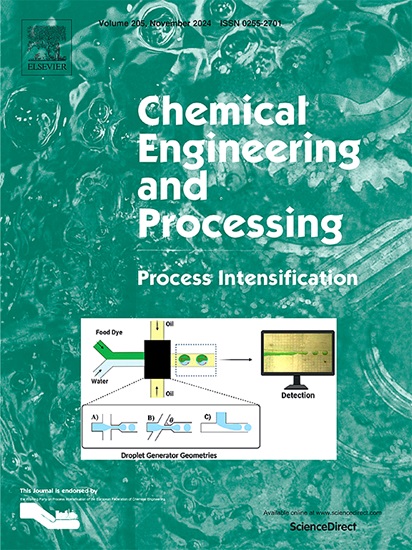Enhanced chloroquine adsorption using cobalt-modified mesoporous silicas for water treatment
IF 3.8
3区 工程技术
Q3 ENERGY & FUELS
Chemical Engineering and Processing - Process Intensification
Pub Date : 2025-02-17
DOI:10.1016/j.cep.2025.110224
引用次数: 0
Abstract
The widespread use of chloroquine (CQ) during the COVID-19 pandemic has led to its accumulation in water bodies due to the inefficiency of wastewater treatment plants (WWTPs). This study synthesized, characterized, and evaluated mesoporous silicas MCM-41 and MCM-48 modified with cobalt oxide nanoparticles for CQ removal. Characterization was conducted to assess the adsorbent properties and their correlation with the adsorption process. The materials exhibited high surface areas (SBET > 369.49 m2 g−1) and uniform mesoporous structures, confirming their suitability for adsorption and desirable properties for recalcitrant contaminant removal. Adsorption kinetics followed the Elovich model, with equilibrium capacities of 25.3 mg g−1 (MCM-41-CoO) and 24.04 mg g−1 (MCM-48-CoO), and intraparticle diffusion governed by a multi-step process. Isotherms were best described by the Sips model, with maximum adsorption capacities of 24.78 mg g−1 (MCM-41-CoO) and 24.00 mg g−1 (MCM-48-CoO) at temperatures ranging from 15 to 45 °C. Thermodynamic parameters indicated a spontaneous, endothermic process with low randomness, suggesting chemical interaction in a monolayer followed by electrostatic interactions. These findings highlight the efficiency of modified mesoporous silicas as adsorbents for CQ, a critical pharmaceutical contaminant, and contribute to developing sustainable water treatment technologies essential for environmental protection and public health.

求助全文
约1分钟内获得全文
求助全文
来源期刊
CiteScore
7.80
自引率
9.30%
发文量
408
审稿时长
49 days
期刊介绍:
Chemical Engineering and Processing: Process Intensification is intended for practicing researchers in industry and academia, working in the field of Process Engineering and related to the subject of Process Intensification.Articles published in the Journal demonstrate how novel discoveries, developments and theories in the field of Process Engineering and in particular Process Intensification may be used for analysis and design of innovative equipment and processing methods with substantially improved sustainability, efficiency and environmental performance.

 求助内容:
求助内容: 应助结果提醒方式:
应助结果提醒方式:


